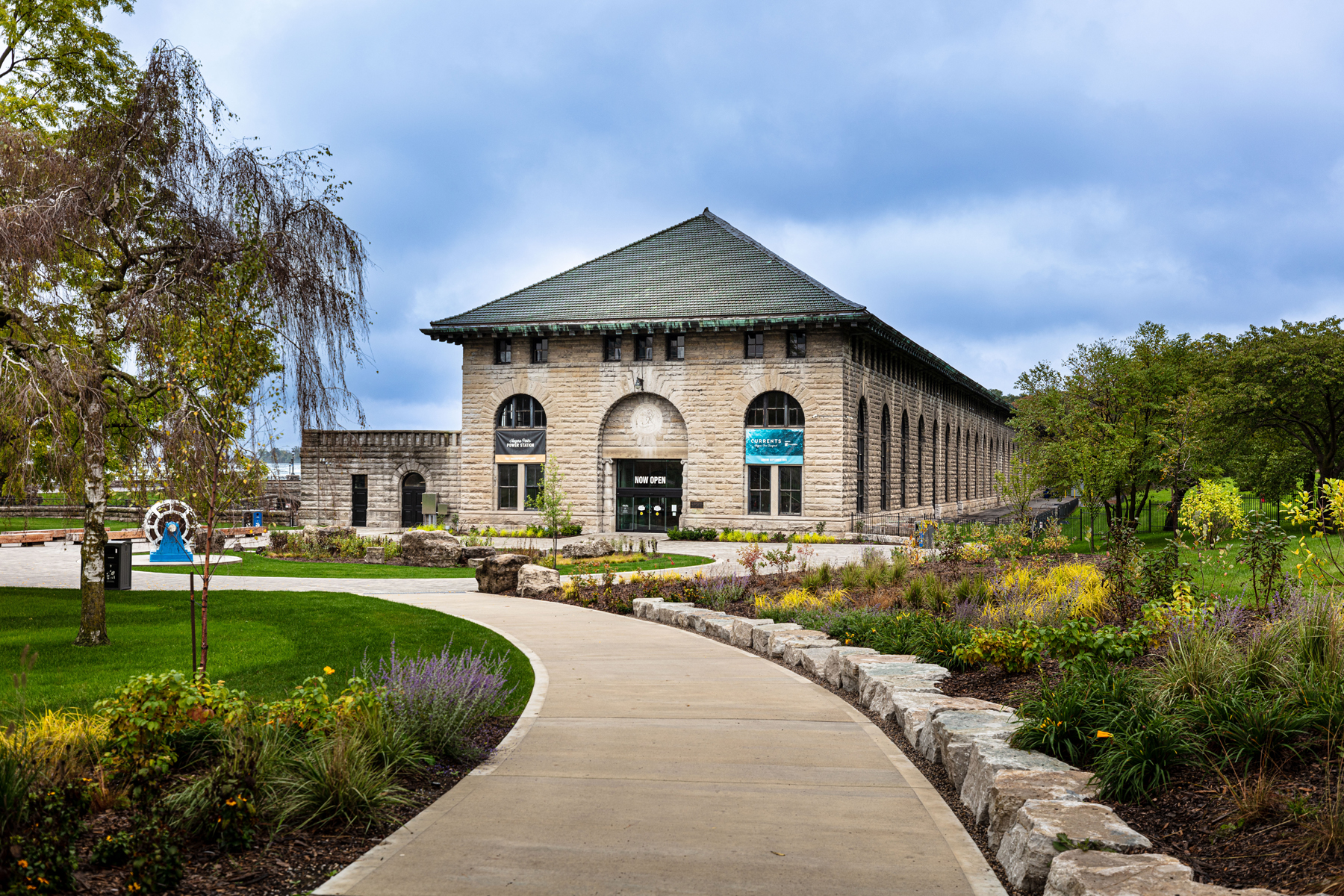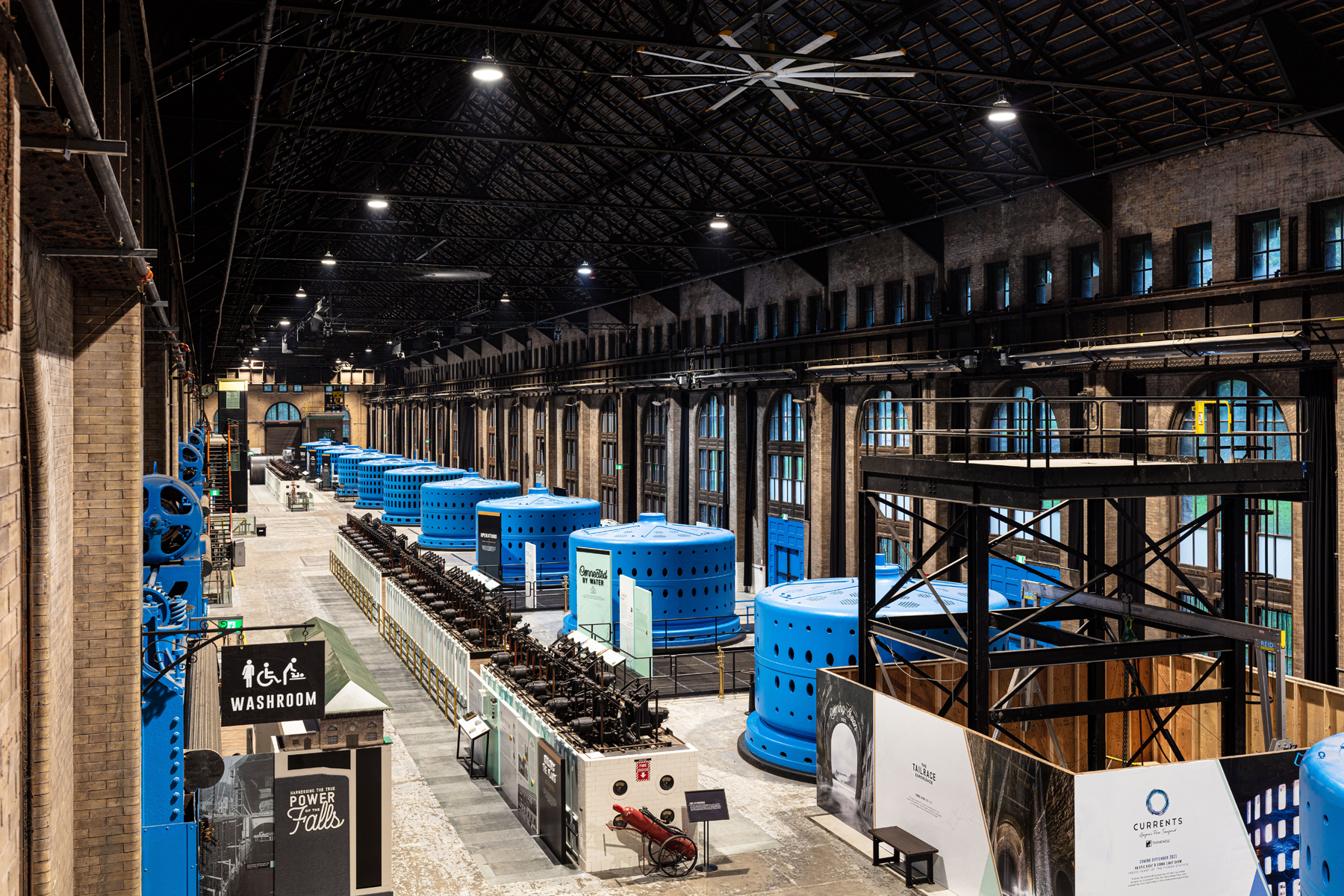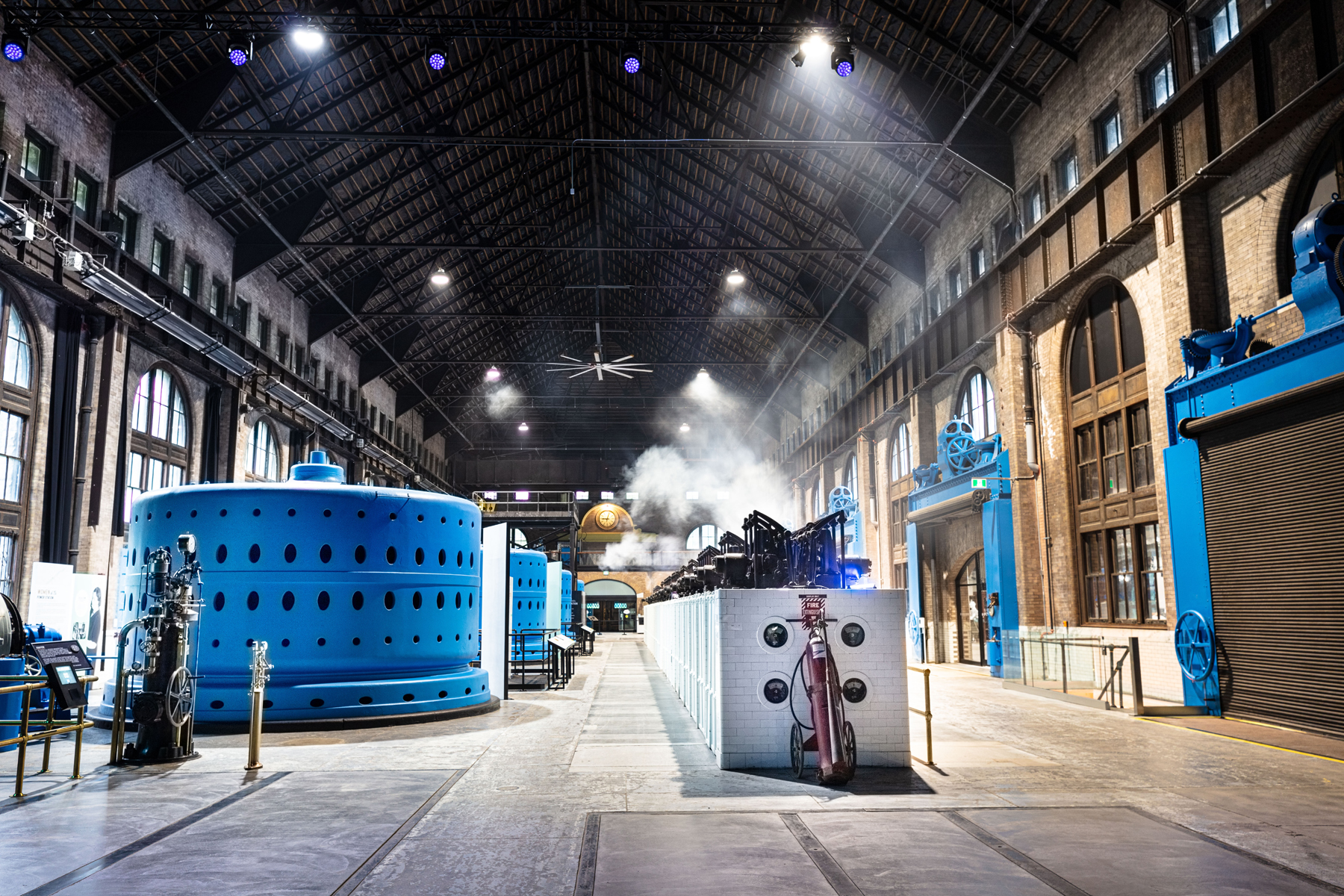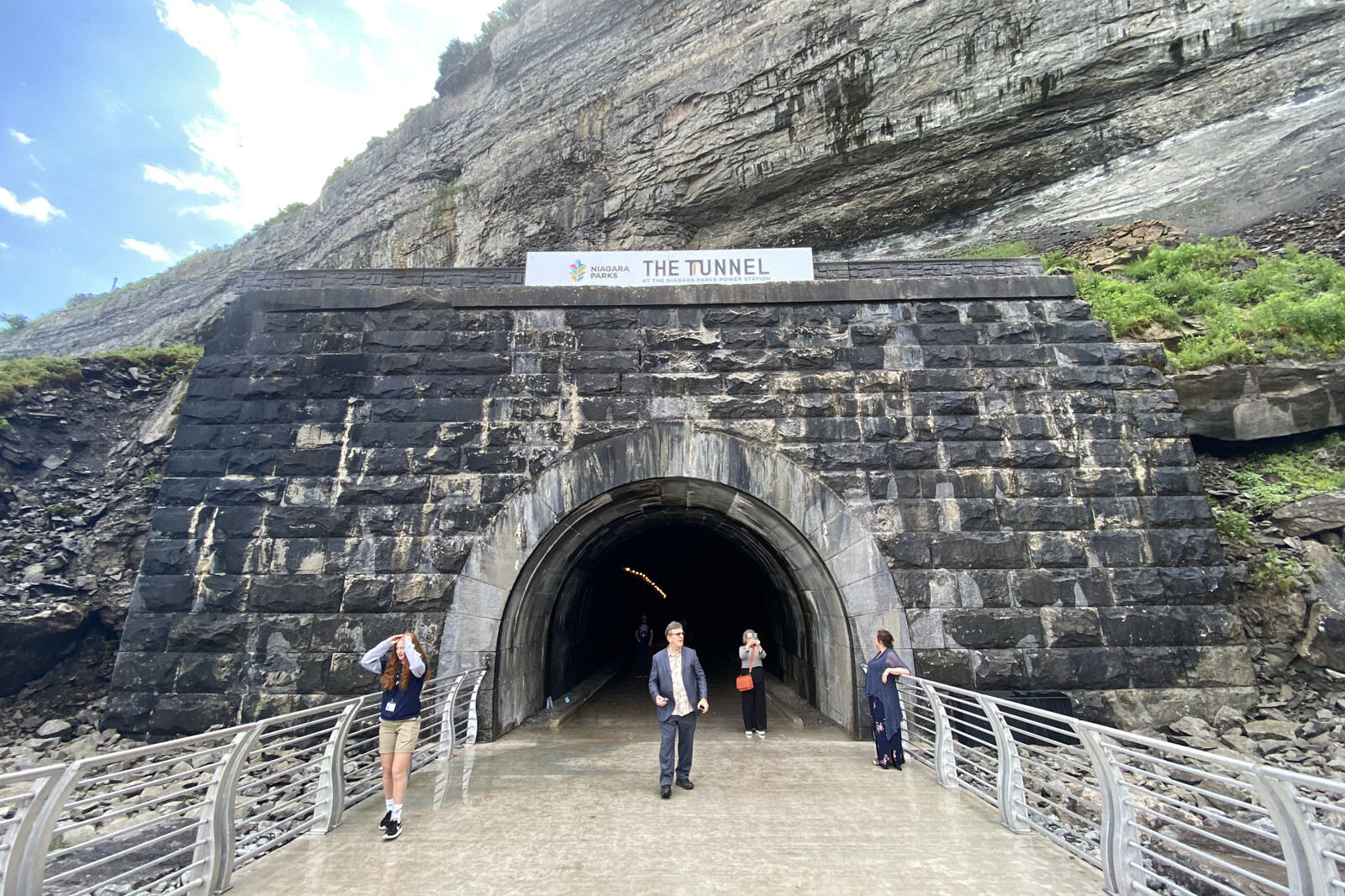In 2017, Niagara Parks’ engineering team began a thorough assessment of the century-old building to determine the state of its structural integrity.
The initial inspection revealed water from the Niagara River was still entering the plant and flowing into the penstocks. The large headgates that acted as a barrier had deteriorated from rust. Safety was of the utmost concern.
Based on the findings of the assessment, a concrete barrier was placed in front of the penstocks to stop water from entering the power station. A swing stage was also built to allow access to different levels of the plant where geotechnical and structural inspections were completed.
Phase 1 Construction
Phase 1 construction took place between 2018 and 2021, with most of the construction concentrated inside the 600-foot forebay to protect the generator hall.
Part of the forebay was reserved to create a 100-foot water feature that will show visitors how power generation began with water flowing into the plant. On either side of the water feature, new floor space was created for amenities such as shopping, guest services and future culinary experiences.
The original equipment in the generator hall was meticulously shined and restored to showcase the incredible power generating technology built in the early 1900s.
Heritage Preservation
As the environmental and cultural stewards of the Niagara River corridor, preserving the heritage of the power station was of the utmost importance, driving all the decisions during the adaptive reuse construction process.
A comprehensive strategic conservation plan determined what elements were most important to preserve. All the equipment showcased in the generator hall have been carefully cleaned and left as they were when they were originally built. The power station was built utilizing durable materials such as limestone, granite, brass, and copper.
More than 400 people have worked in the facility during the adaptive reuse construction, including more than 100 staff from Niagara Parks.
Featured Machinery
There are 11 generators inside the power station. The first five were installed when the power station opened in 1905. The remaining six were added up to 1924, when the plant was fully operational. The generators inside the power station have been cleaned and painted blue, the original colour prior to the power station closing in 2006.
Each of the generators has a corresponding governor that controlled and regulated the rotational speed of the turbine. The governor made it possible for the generator to produce a constant frequency of alternating current electricity. The frequency was measured in hertz. The governors you see inside the power station have been meticulously cleaned and hand-polished to preserve their heritage quality.
Exciter units were mounted on the same shaft as the main generators and produced DC power for the field windings. They weighed 45,000 pounds and created excitation powered by water. When spinning, the exciters could reach up to 600 rotations per minute! When the power station first opened in 1905, its five exciter units were placed deep underground in the wheelpit. Eventually, it was discovered the environment was too moist, and the exciters were moved to the main generating floor. The exciter placed outside, in Power Plaza, was reduced to 16,000 pounds. A special powder coating was applied to protect it from the outdoor elements.
The Workers
At Niagara Parks, we are fortunate to have many talented and diversely skilled tradespeople who played a vital role in bringing the power station back to life. During the adaptive reuse construction, we employed our electricians, plumbers, masons and laborers.
In addition, approximately 75 contractors were hired and more than 400 people have worked in the facility, including more than 100 staff from Niagara Parks.
LOCATION
Niagara Falls, Ontario
CLIENT
COMPLETED
2021
SERVICES
Adaptive Reuse
AWARDS
2022 Ontario Heritage Award for Excellence in Conservation
Lieutenant Governor of Ontario
2022 Grand Prize Award
Niagara Biennial Awards
PRESS
Industrial Tourism: Two Projects Celebrate the Machine Age
Landscapes/Paysages (CSLQ)
Niagara Region announces 2022 Niagara Biennial Design award winners
Canadian Architect
Niagara Parks Power Station design scoops award
Niagara Falls Review
The Pristine Power Plant
Retrofit Magazine
Niagara Falls Power Station is Now an Education and Entertainment Destination
Metropolis Magazine
Niagara Parks Power Station
Building Magazine
Niagara Falls Power Station is Restored and Repurposed
Treehugger.com
Built by Nikola Tesla, George Westinghouse & JP Morgan, world’s first AC generating plant has been adaptively reused to power economy
Revitalization.org
Niagara Parks Power Station receives Lieutenant Governor’s Ontario Heritage Award for Excellence in Conservation
Niagara Falls Review
Power Station Adaptive Reuse Construction
Niagara Parks Commission
Niagara Falls’ newest attraction, Niagara Parks Power Station, offers visitors a closer look at its historical power
The Globe & Mail






